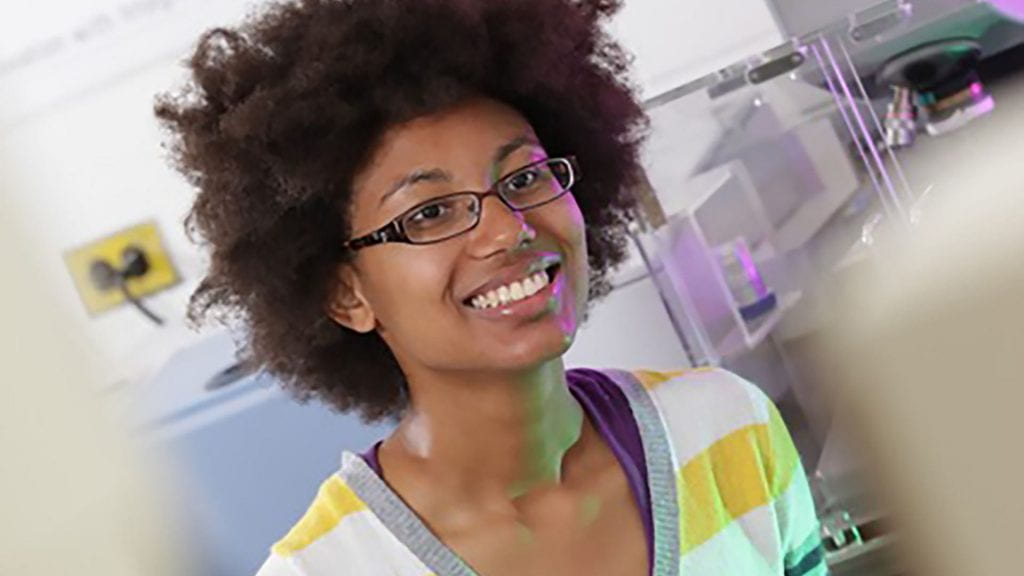Bryné Hadnott graduated from Washington University in 2013 with a BA in Earth and Planetary Sciences. Since then, she has had an incredibly diverse career, ranging from science reporting to research on Mars to, most recently, imaging solutions for a global intelligence company.
At her current job, Hadnott works as an image processing engineer for BlackSky, a global intelligence agency that unites data imaging and satellite observation to compile information about the earth and environment. The company’s data can be applied to a variety of areas, including, among others, intelligence, humanitarian, and natural disaster relief. In addition to producing images and visual elements, BlackSky also collects and synthesizes many methods of communications from the region of interest to present its clients with a more coherent look at what is happening on the ground.
Natalie Snyder, a communication intern with the Office of Sustainability, spoke with Bryné Hadnott to learn more about her professional career and gain further insight into how WashU has helped bring her to where she is today.
How did your years at WashU prepare you for a career in climate research and sustainability?
During my freshman year, I was part of a program through the Earth and Planetary Sciences department called Pathfinders. The goal of Pathfinders is to bring together students from a variety of majors who were all interested in environmentalism and sustainability. I took classes on remote sensing and environmental ethics, attended seminars in the earth science department, and met graduate students working on a variety of projects. Oddly enough, it was the planetary science courses by Ray Arvidson and Brad Jolliff that kept me interested in environmentalism. Learning about the Earth as one of many amazing planets gave me a different framework for studying it.
You have had a pretty varied career where you have fulfilled many different roles. What is one thing you have learned from such interdisciplinary work?
I definitely like to wander. I think the most important thing I’ve learned from interdisciplinary work is how to ask good questions. Asking good questions involves putting aside any assumptions you’ve made about a problem and looking at the problem again with a fresh start. Why are we studying this problem? Why is it important? What have we already done that drives at solving this problem?
My previous work experiences involved both working independently to research a topic and collaborating with other experts to holistically analyze all of the data. Being able to work independently, but then asking another subject matter expert for help, has been a critical skill at my current job. However, one downside to having a varied career is constantly needing to learn on the job. Coursera, Stack Exchange, Udemy, and Kaggle are all great ways to learn more about a topic or ask specific questions.
How does your work engage sustainable issues?
As BlackSky continues to add more satellites to the existing constellation, we’ll be able to engage more directly with sustainable issues. Some of the applications for our satellites include tracking wildlife and measuring the human costs of climate change.
What role does imaging play in your research interests and larger career goals? How do you see your engagement with imaging changing in the years to come?
Imaging is a central part of my research interests and larger career goals. I really enjoy the combination of quantitative and qualitative analysis imaging affords. In the years to come, I think my engagement with imaging will be mostly with the information extracted from the image rather than with the image itself. Computer vision techniques and machine learning models are changing the way we interact with images. Instead of having an analyst look over an image and use their expertise to determine the content, machine learning algorithms trained on thousands of images can detect the content for you.
BlackSky works to generate global intelligence through visual data. What do you do in your current job? Are there any projects you are working on that you are particularly excited about?
In my current job, I’ve been analyzing images to build metrics for image quality. Determining what the quality of an image is has been an interesting exercise. There are metrics that are very subjective—like asking an analyst how they perceive an image—and other metrics that are more objective that require more mathematical rigor. Unfortunately, I can’t say much about any upcoming projects, but I’m excited for what’s on the horizon.
What is your advice for WashU students interested in entering fields with direct applications to environmental and earth science?
Learn Python! Especially the tools in scikit-image and scipy.
Interested in connecting personally with more WashU alumni involved with sustainability work? Join the WashU Sustainability Network LinkedIn Group – an online networking and resource group that brings together alumni, students, parents, staff, and faculty to network, explore, discuss trends, and share technology, business, and market information in all areas of sustainability.
